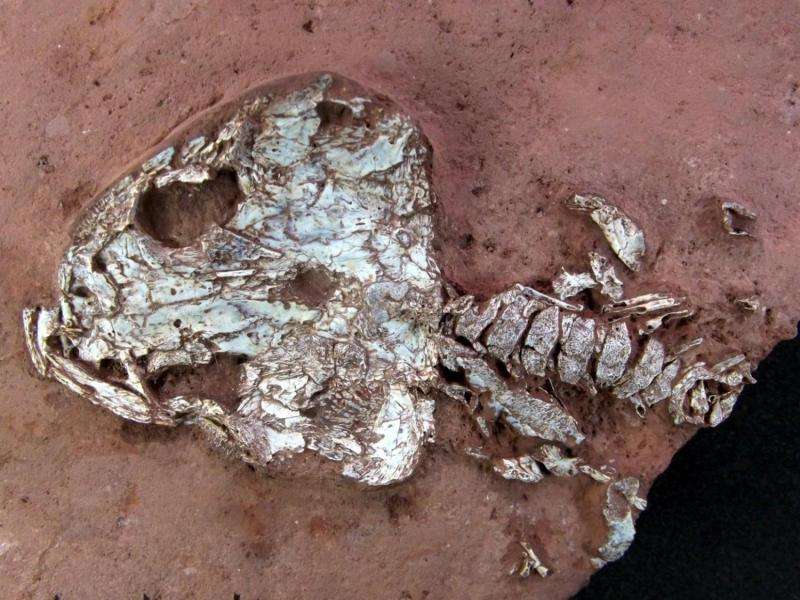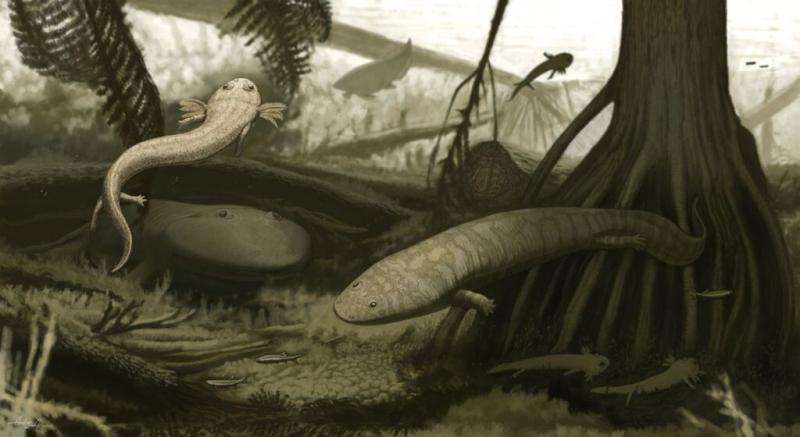'Fire frogs' and eel-like amphibians: Brazilian fossil discovery

Two hundred and seventy-eight million years ago, the world was a different place. Not only were the landmasses merged into the supercontinent of Pangaea, but the land was home to ancient animals unlike anything alive today. But until now, very little information was available about what animals were present in the southern tropics. In a study published in Nature Communications, scientists from The Field Museum and colleagues from around the world describe several new amphibian species and a reptile from northeastern Brazil that help fill this key geographic gap and reveal how animals moved among regions in the supercontinent.
"Almost all of our knowledge about land animals from this time, comes from a handful of regions in North America and western Europe, which were located near the equator," said Field Museum scientist Ken Angielczyk, one of the paper's authors. "Now we finally have information about what kinds of animals were present in areas farther to the south, and their similarities and differences to the animals living near the equator."
The paper describes two new species, both archaic aquatic carnivorous amphibians. One, Timonya annae (tih-MOAN-yuh ann-AYE), was a small, fully aquatic amphibian with fangs and gills, looking something like a cross between a modern Mexican salamander and an eel. The other new species, Procuhy nazarienis (pro-KOO-ee naz-ar-ee-en-sis), an amphibian whose name in the Timbira language of its Brazilian homeland, means "fire frog." Procuhy didn't live in fire, though—it spent its whole life in water. Its name comes from the Pedra de Fogo ("Rock of Fire") Formation where it's from, so named for the presence of flint. Although both species are distant relatives of modern salamanders, they are not true frogs or salamanders, but members of an extinct group that was common during the Permian.
In addition to these two new species, the paper also describes a collie-sized amphibian whose closest relatives lived in later times in southern Africa, and an lizard-like reptile species that until now has only been found far away in North America. The fact that these species have also been found in modern-day Brazil helps scientists paint a picture of the ways that animals spread during the Permian and how they colonized new areas.
Above all, the research illuminates animal communities at a time and place that has received very little attention. "Fossils from classic areas in North America and Europe have been studied for over a century, but there are long-standing questions about how different animal groups dispersed to other areas that we can't answer using just those fossils," said Angielczyk. "Exploration in understudied areas, such as northeastern Brazil, gives us a snapshot of life elsewhere that we can use for comparisons. In turn, we can see which animals were dispersing into new areas, particularly as an ice age was ending in the southern continents and environmental conditions were becoming more favorable for reptiles and amphibians."

More information: Nature Communications, dx.doi.org/10.1038/NCOMMS9676
Journal information: Nature Communications
Provided by Field Museum




















